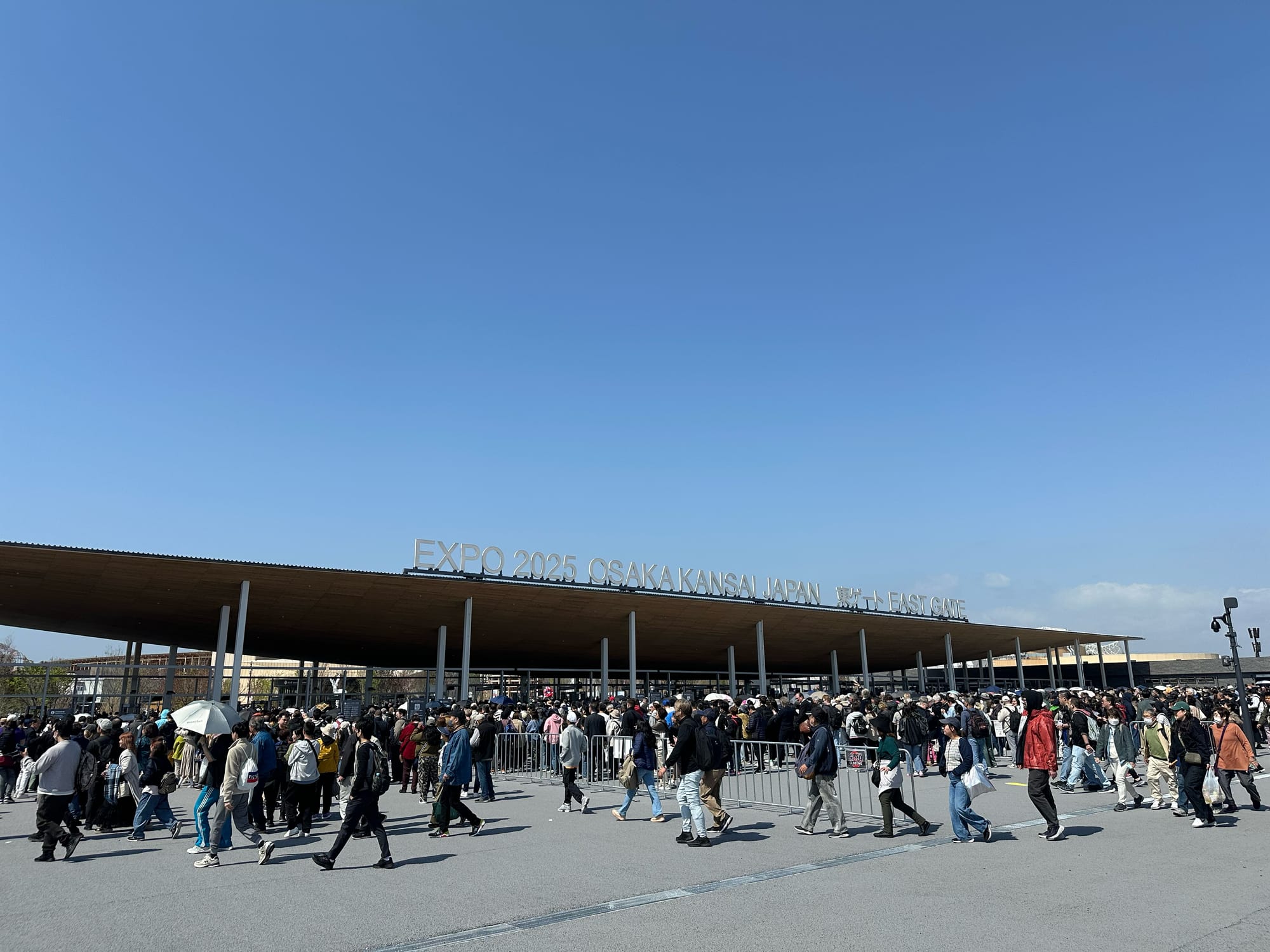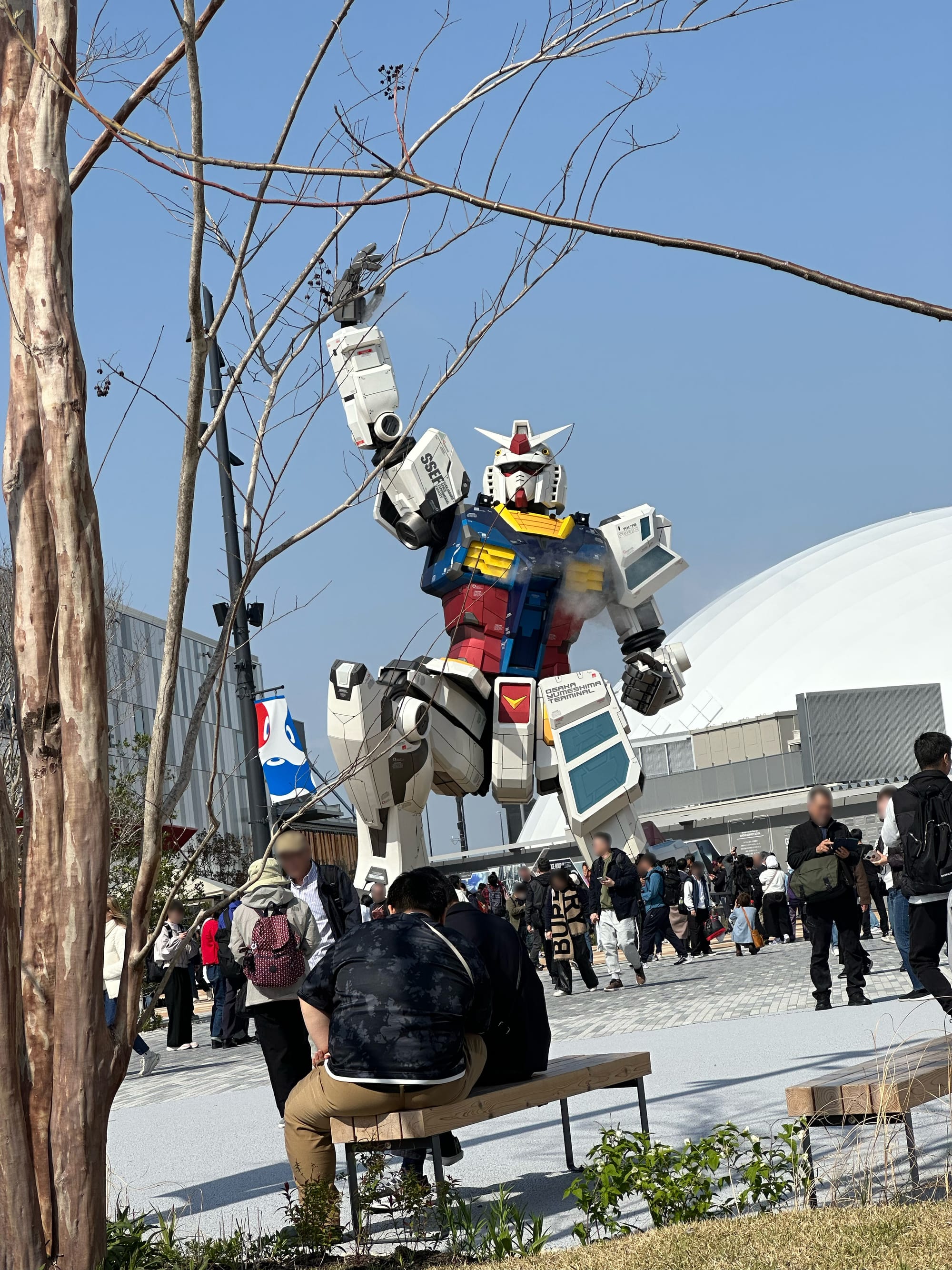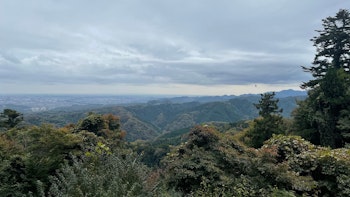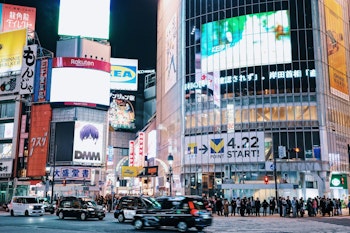
There was a moment around Monday midday where I fell in love with Osaka Expo 2025. I’d just experienced the United States’ Pavilion, featuring a goofy little star mascot singing an earworm pop song about the power of imagination. I went up to the top of the Grand Ring, the world’s largest wooden architectural structure according to Guinness World Records, taking in the full view of the event. In the distance, I could see a giant Gundam with its hand jutting into the sky.
The years of public debate regarding the point of even hosting this edition of the world’s fair and the months of perceived lack of interest from the public left my mind for the first time while attending Osaka Expo. In this sunny and breezy moment, the nagging question “what’s the point of an event like this anymore?” vanished.
I simply was enjoying something akin to a theme park, albeit with more soft power and messaging about climate change.

Osaka Expo 2025 officially opened its gates to the public on Sunday, April 13. The gathering, which finds over 150 nations from around the globe around with assorted international groups and companies opening up pavilions and booths, is scheduled to run until Oct. 13. It’s one of the higher profile global events Japan has held in recent memory, especially given the Tokyo Olympics true potential being snuffed out by the COVID-19 pandemic. It’s also received plenty of scrutiny for being a waste of money and pointless.
When I had the chance to attend the opening as a guest, I immediately booked a ticket for the next day to get a sense of how Expo 2025 feels.
Coming up from the elevator out of Yumeshima Station on Sunday, the answer would have been “not good at all.” Rain poured down hard while strong winds blew in from Osaka Bay. Staff ran around trying to direct the drenched crowds towards the areas where they’d need to wait outside of the large East Gate entrance, but they didn’t seem ready for weather approaching a tropical storm (“they look clueless” one guest near me muttered to their friend). Once organized, guests still had to wait upwards of two hours to get in, owing to the airport-like security system checking everyone.

The bad vibes continued for the next few hours. Those not lined up for one of the pavilions or the official gift shop huddled for dryness under the Grand Ring, which didn’t really work since the rain was coming in sideways. Any indoors space without a line became packed. I visited a cafe/arcade that was overflowing with people, while the Osaka-themed food hall beneath wasn’t much better, especially with long lines for food.
“This seems like such a mess,” a woman who invited me to share her standing table told me, adding that they seemed totally unprepared for the rain. It wasn’t all bad though. After accepting that I didn't want to spend my whole day in a food court, I went outside to find a country’s place to enter. I eventually ended up at the Indonesian Pavilion, which was charming and featured a small cup of free hot coffee at the end, which felt amazing on a cold day.
The first day of Expo 2025 was bound to be a headache — despite the hand-wringing over lack of interest, it felt packed on day one, with the big complaint becoming “there’s too many people!” — but the weather turned it into something even more difficult for all involved. At least until it wasn’t — by 7 p.m., the rain stopped and suddenly everything came to life. An elaborate drone show played out in the sky. Ado performed in the open-air Matsuri Arena as part of an official kick-off concert to a packed house and thousands more listening beyond its walls. There were fireworks.

Monday offered a more realistic view of what Expo 2025 truly is, benefitting from incredible weather until some rain at night. While it was still crowded at Yumeshima Station, everything moved much smoother. Whereas a day before I waited an hour and a half to get in, this weekday morning took just 20 minutes. The sight of a large statue of official freaky mascot Myaku-Myaku — the true MVP of Expo 2025, represented everywhere and appearing on some truly wonderful pieces of merch — greeted the crowds.
The best point of comparison for Expo 2025 is Disney’s Epcot Center, albeit with the thrills present there swapped out for more social messaging. The bigger pavilions — whether backed by a nation or a company — had to offer spectacle alongside experience to stand out. Getting into the bigger ones could be tough — in a very Fast Pass move, you’re allowed to reserve certain shows or pavilions in advance, but you only get one at a time — but highlights included Canada using augmented reality to capture the splendor of the country and the Netherlands giving each participant a glowing orb to help them learn about efforts to combat sea level change.
Like most theme parks today, many countries believe more screens equal more fun, though this isn’t really the case and often left some pavilions feeling a little samey. The United States, fittingly, at least took it to the extreme with a multi-room screen experience featuring a silly star-shaped mascot named Spark who zoomed around the room singing a bonkers pop song about America’s beauty, drive to go back to the moon and excellence at developing AI. It filled me with pride as an American to see my home capable of making over-the-top theme park experiences, but made me cringe at nearly everything else. I preferred the focus on the tactile from Italy or the beautiful architecture of Poland.

Elsewhere, one could see actual interesting potential developments for the future ranging from medical advances, robotics breakthroughs and mobility developments (though the biggest focus was on the spectre of climate change, which did put a slightly heavy vibe around almost everything). I barely saw anything in the grand scope of things, but still left Monday feeling satisfied, and trying to imagine a trip back sometime in the next few months, like I was plotting out a Fuji Q trip, keeping the weather in mind (seriously, if it’s nice out…it’s a blast, but that Sunday was pretty horrible).
Expo 2025 will mutate and change over the next few months, so the version I saw might not be the one that exists in the near future. That’s part of the charm though, and I’d recommend Expo 2025 as something to visit if you’re already planning a Kansai trip over the next seven months (I'm not sure I’d say you need to rush out and see it now). Think of it as a pop-up theme park with plenty of spectacle and a pinch of geopolitics thrown in for good measure. A transformative moment for Japan? I don’t know. A fun experience that will be fun to look back on plus plenty of Myaku-Myaku? You bet.










